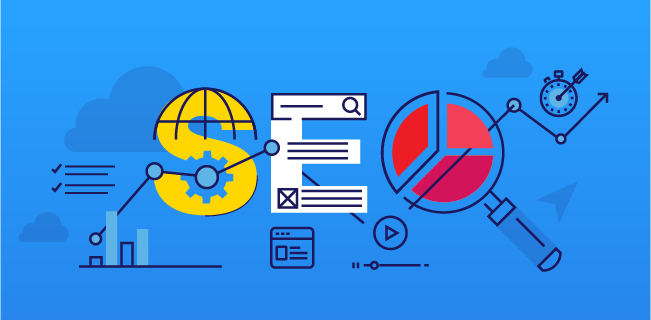Understanding What Is Not Considered a Default Medium in Google Analytics: Insights
Understanding What Is Not Considered a Default Medium in Google Analytics: Insights
Blog Article
Thinking Outside package: Leveraging Unique Mediums to Optimize Google Analytics Performance
In the realm of electronic marketing, the quest for boosted Google Analytics efficiency has actually become a strategic imperative for companies seeking to fine-tune their on the internet presence. Conventional methods usually drop short in capturing the full spectrum of consumer communications and actions. By checking out unusual mediums as avenues of information collection, a new realm of possibilities arises. These uncharted territories offer a wealth of untapped insights that can potentially transform the way we understand and enhance our electronic techniques.
Distinct Data Resources

CRM systems, as an example, can offer understandings right into private consumer communications, acquisition background, and choices, which can be incorporated with Google Analytics information to create more personalized advertising and marketing strategies. Social network systems offer useful information on customer demographics, passions, and engagement metrics, permitting businesses to gauge the performance of their social networks campaigns and optimize material for much better performance. Email marketing data, including open rates, click-through rates, and conversion metrics, can additionally be leveraged to track user interaction and actions past internet site communications recorded by Google Analytics. By leveraging these distinct data resources, companies can fine-tune their techniques, enhance targeting efforts, and improve overall Google Analytics performance.
Social Network Insights

Moreover, social media analytics tools enable businesses to track crucial performance indicators, screen project effectiveness, and gauge the impact of their on the internet tasks. Comprehending the demographics of followers, determining popular content styles, and examining engagement degrees can assist organizations tailor their marketing techniques for better outcomes.
Offline Advertising And Marketing Integration
Incorporating offline marketing strategies with digital analytics can improve overall campaign performance and offer an extra thorough understanding of consumer actions. what is not considered a default medium in google analytics. By linking the gap in between online and offline initiatives, companies can track the influence of typical advertising networks such as print ads, television commercials, straight mail, and occasions on their online visibility

Additionally, applying phone call monitoring systems for offline advertising and marketing activities makes it possible for organizations to capture useful data on customer inquiries created through published advertisements or materials (what is not considered a default medium in google analytics). By assessing phone call data along with on-line metrics in Google Analytics, businesses can obtain much deeper insights into the client trip and optimize advertising approaches for enhanced performance across all networks
IoT and Wearable Technology
Using IoT and wearable innovation in electronic analytics can transform data collection and customer understandings for organizations seeking a much deeper understanding of individual habits patterns. These cutting-edge modern technologies provide a smooth means to collect real-time data from various touchpoints. IoT gadgets can track user communications with products or solutions, supplying important information on usage patterns and preferences. Wearable innovation, such as smartwatches or physical fitness trackers, can offer insights into user activities, health metrics, and also location data.
Gamification Approaches
The execution link of gamification strategies in digital analytics offers an innovative approach to improving individual engagement and driving workable insights for businesses. By incorporating game-like components such as points, badges, leaderboards, and compensates right into the analytics user interface, firms can inspire users to interact more frequently and meaningfully with the information.
Gamification urges users to explore various functions of the analytics system, discovering useful understandings that may have or else gone undetected. Through interactive difficulties and progression monitoring, customers are incentivized to dig much deeper right into the information, resulting in raised time spent on the system and a greater probability of finding essential trends or patterns.
Furthermore, gamification can foster a feeling of competitors amongst individuals, stimulating them to aim for higher efficiency and interaction degrees. This affordable spirit can drive raised individual adoption rates and a more extensive application of the analytics devices offered. Eventually, by leveraging gamification approaches in electronic analytics, organizations can produce a more efficient and appealing setting for customers, leading to even more informed decision-making and improved total efficiency.
Verdict
Finally, leveraging non-traditional mediums such as distinct data resources, social networks understandings, offline marketing combination, IoT and wearable technology, and gamification approaches can maximize Google Analytics performance. By thinking outside package and discovering these different resources of information, organizations can get valuable understandings and boost their overall advertising and marketing strategies. It is necessary for business to continually explore new methods to gather data and evaluate it in order to stay ahead in the ever-evolving electronic landscape.
By incorporating information from resources such as client relationship management (CRM) systems, social media systems, and e-mail marketing projects, companies can get a much more extensive understanding of their audience habits and interaction patterns. Social media platforms use useful data on individual demographics, passions, and involvement metrics, allowing services to gauge the effectiveness of their social media campaigns and maximize web content for far better efficiency. By leveraging these distinct data sources, services can fine-tune their methods, boost targeting efforts, and boost total Google Analytics efficiency.
Exploring social media insights can provide companies with valuable information on individual demographics, passions, and involvement metrics, allowing for notified decision-making and calculated optimization of marketing efforts. By believing outside the box and discovering these alternative resources of information, services can gain useful insights and boost their total advertising techniques.
Report this page